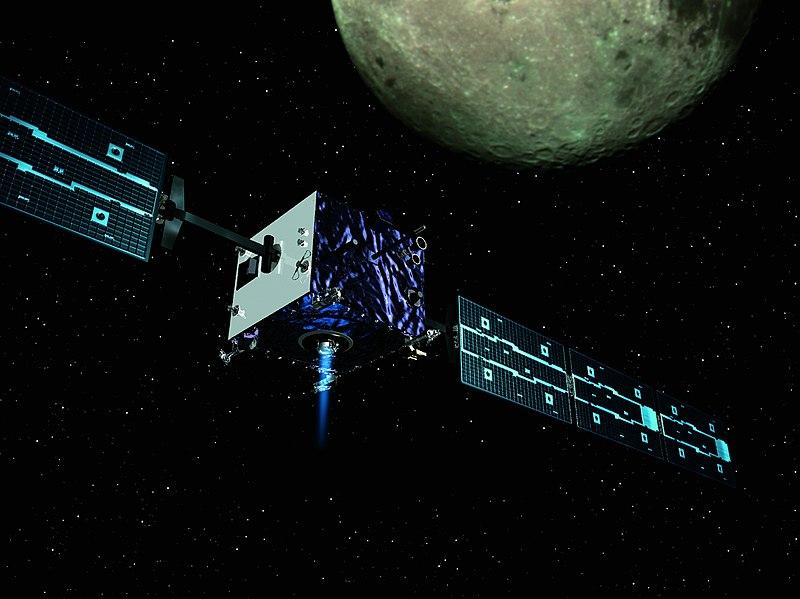First South Korean Lunar Mission, Danuri, to be Launched This Week

Representational Image. Image Courtesy: Wikimedia Commons
South Korea is heading towards launching its first Moon mission, scheduled for this week. The lunar probe has been named 'Danuri,' which means enjoy the moon. It is expected to reach its destination by mid-December and shall orbit for a year afterwards.
With an investment of 237 billion won (the official currency of South Korea and equals $180 million) and developed over six years, Danuri brings excitement to the researchers and scientists as the probe has been aimed at revealing insights about crucial aspects of the Moon including ancient magnetism of it and dust spread across its surface. Also known as the Korea Pathfinder Lunar Orbiter, researchers hope that the probe will shed light on hidden water sources along with ice near the poles, especially in the areas that remain cold and dark permanently.
Space scientists of South Korea expect that the maiden lunar mission of the country will ease more ambitious projects in the country in the future. Kyeong-ja Kim, the principal investigator for a Danuri instrument, a γ-ray spectrometer, and a planetary geoscientist at the Korea Institute of Geoscience and Mineral Resources in Daejeon, expressed his hopes about the mission in a statement saying, "Success for Danuri will secure future planetary exploration. Everybody is so happy and excited."
The South Korean probe Danuri was taken to Cape Canaveral, Florida, US, and is being prepared to be flown beyond Earth's orbit on August 2. Danuri will be placed in a Falcon 9 rocket to be taken away from Earth's orbit and head towards its destination. An hour after the spacecraft weighing 678 kilograms is launched, it will get detached from the rocket, and from here onwards, KARI (Korea Aerospace Research Institute) will take control of it. The spacecraft has solar panels and a parabolic antenna.
Eunhyeuk Kim, the project scientist for the mission at KARI in Daejeon, said, "The spacecraft is ready to launch." In expressing the team's cautions, Kim said, "Until the time of the launch, we will be checking all the systems repeatedly."
Rachel Klima, a planetary geologist at the Johns Hopkins University Applied Physics Laboratory in Laurel, Maryland, and a part of the science team of the mission, commented, "It's just so cool to see more and more countries sending up their orbiters and adding to the global understanding of what's going on the Moon."
Danuri will have five scientific instruments, among which the most exciting is the PolCam, which will be the first camera to scan the lunar surface using polarised light. PolCam will record how light reflects from the lunar surface, and researchers expect that it will reveal the dust grains' size and density.
"This could help researchers to study unusual objects such as the tiny, porous towers of dust called fairy castle structures,"—Rachel Klima commented.
Another highly sensitive camera provided by NASA, the ShadowCam, will capture images of the Moon's permanently shadowed regions. These regions never get sunlight.
"Since shortly after the Moon formed, volatile materials such as water from comets have been bouncing off its surface and becoming trapped in these very cold regions. We've got billions of years of Solar System history locked in the layers of these cold traps. By giving researchers a view of the terrain in these regions and identifying brighter regions that might be ice deposits, ShadowCam will be able to inform future landing missions to study that history," Klima commented.
Danuri will also have a magnetometer along with the optical instruments, and scientists believe it can help reveal the crucial aspects of the Moon's magnetism. The Moon's surface demonstrates highly magnetic regions, suggesting that the lunar core has generated as strong a magnetic field as Earth via a process known as Dynamo.
Scientists remain puzzled at the lunar magnetic phenomenon. The core of the Moon is much smaller and proportionally far from the surface compared to Earth. Then how Moon's core could have maintained such a strong dynamo remains elusive. The Korean Mission may reveal something about this, experts believe.
Get the latest reports & analysis with people's perspective on Protests, movements & deep analytical videos, discussions of the current affairs in your Telegram app. Subscribe to NewsClick's Telegram channel & get Real-Time updates on stories, as they get published on our website.














